
Ludwig Binswanger (1881-1966) was a seminal figure in the history of psychiatry and psychotherapy. As the founder of existential analysis or “Daseinsanalysis,” he developed an innovative approach that fused insights from Martin Heidegger’s existential philosophy with clinical psychotherapeutic practice. Binswanger’s work profoundly influenced the development of humanistic, phenomenological, and existential schools of psychotherapy in the 20th century. His ideas provide an important bridge between the medical model of psychological disorders and an understanding that places human suffering within the broader context of existential meaning, lived experience, and “being-in-the-world.”
Biographical Background
Binswanger was born into a prominent family of Swiss physicians and grew up immersed in both the medical and philosophical traditions of the early 20th century. After earning his medical degree at the University of Zurich, he trained in psychiatry under some of the leading figures of the time, including Carl Jung and Eugen Bleuler. In 1911, Binswanger became the medical director of the Bellevue Sanatorium in Kreuzlingen, a position he would hold for nearly five decades.
It was during his early years at Bellevue that Binswanger began to question the limitations of traditional psychiatric approaches, which he felt failed to adequately capture the subjective experience and existential situation of the patient. Inspired by his correspondence with Sigmund Freud and his deep engagement with the work of phenomenological philosophers like Edmund Husserl and Martin Heidegger, Binswanger set out to develop a new framework for understanding mental illness that would place the patient’s “being-in-the-world” at the center.
Foundational Ideas of Existential Analysis
3.1 Daseinsanalysis and Heidegger’s Existential Philosophy
The cornerstone of Binswanger’s approach is the concept of “Daseinsanalysis,” a term he coined by combining Heidegger’s notion of Dasein (which literally means “being there” and refers to the distinctively human mode of existence) with psychoanalysis. For Heidegger, Dasein is characterized by its openness, its “being-in-the-world,” and its capacity for self-interpretation and meaning-making. Binswanger saw in these ideas a powerful framework for understanding the existential dimensions of mental illness and health.
In Binswanger’s view, psychological suffering arises not merely from intrapsychic conflicts or dysfunctional thought patterns, but from fundamental disturbances in an individual’s “being-in-the-world” – their relationship to themselves, others, and the physical and social environments they inhabit. Mental illnesses, he argued, often involve a constriction or distortion of the patient’s existential possibilities, a shutting down of their openness to the world and their capacity for authentic self-realization.
3.2 Worlds and Modes of Existence
Drawing on Heidegger’s existential analytic, Binswanger articulated a framework for understanding the structure of human existence in terms of three interconnected “worlds” or dimensions:
Umwelt: The “around world” or physical environment that surrounds us
Mitwelt: The “with world” or social dimension of our lives, our relationships and interactions with others
Eigenwelt: The “own world” or personal dimension, our relationship to ourselves and our inner life
For Binswanger, psychological health involves a flexible and harmonious integration of these three worlds, while mental illness often entails a disruption or imbalance in one or more dimensions. A patient with severe anxiety, for example, might experience a constriction in their Umwelt, feeling unsafe or threatened by their physical surroundings. A person with schizophrenia might suffer from a breakdown in their Mitwelt, struggling to connect with others or maintain coherent social relationships. And a depressed individual may undergo a collapse in their Eigenwelt, losing touch with their own deepest values, aspirations, and sense of meaning.
3.3 Existential A Priori and World Designs
Another key concept in Binswanger’s thought is the notion of the “existential a priori” – the fundamental existential structures or “world designs” that shape an individual’s being-in-the-world. These world designs are not merely psychological in nature, but reflect the basic ontological conditions of human existence, such as temporality, spatiality, coexistence, and mortality.
Binswanger argued that each individual has a unique configuration of these existential a prioris, which constitute the basic blueprint or framework within which they understand and engage with reality. In cases of severe mental illness, he suggested, these world designs may become profoundly distorted or constricted, giving rise to alternate realities or ways of being that are cut off from shared understandings and possibilities.
A person experiencing psychosis, for instance, might inhabit a world design characterized by a breakdown in the basic structures of space, time, and causality, leading to experiences of depersonalization, paranoia, or delusion. The task of existential analysis, in such cases, would be to carefully explore and articulate the specific world design of the patient, to understand the existential meanings and contexts of their suffering, and to work towards a gradual re-opening and transformation of their being-in-the-world.
The Therapeutic Approach of Existential Analysis
4.1 Phenomenological Exploration and Empathic Understanding
Binswanger’s approach to psychotherapy was grounded in a commitment to phenomenological exploration and empathic understanding of the patient’s lived experience. Rather than imposing preconceived diagnostic categories or theoretical frameworks, the existential analyst seeks to enter into the world of the patient, to grasp their unique way of being-in-the-world from the inside out.
This involves a careful attention to the specific ways in which the patient experiences and makes sense of their reality – their perceptions, emotions, thoughts, and bodily sensations, as well as the social and cultural contexts in which they are embedded. The therapist aims to suspend their own assumptions and judgments in order to be fully present with the patient, to witness and validate their experience in all its complexity and ambiguity.
At the same time, the existential analyst brings to bear a keen understanding of the basic existential structures and challenges of human existence – the givens of finitude, uncertainty, choice, and responsibility within which we all must navigate. By helping the patient to articulate and confront these deeper existential truths, the therapist seeks to expand their horizon of awareness and to open up new possibilities for authentic self-understanding and action.
4.2 Existential Encounter and Co-Existence
For Binswanger, the therapeutic relationship itself is a crucial space of existential encounter and transformation. Rather than a one-way clinical intervention, therapy is understood as a dialogical process, a “co-existence” or “being-with” in which both therapist and patient are mutually engaged and transformed.
Within this shared space, the therapist aims to establish a relationship of trust, openness, and authenticity, in which the patient feels seen and supported in the fullness of their being. This involves a willingness on the part of the therapist to be touched and challenged by the patient’s experience, to risk genuine emotional engagement and vulnerability.
At the same time, the therapist brings to the encounter a grounded presence and perspective, rooted in their own authentic being-in-the-world. By modeling a way of being that is open, reflective, and responsibly engaged with existential realities, the therapist invites the patient into a new mode of relating to self and world.
4.3 Existential Liberation and Responsibility
The ultimate aim of existential analysis, for Binswanger, is not merely the alleviation of symptoms or the resolution of conflicts, but a fundamental liberation and enhancement of the patient’s being-in-the-world. This involves a gradual movement from constricted, inauthentic, or self-alienated modes of existence towards a more open, integrated, and self-responsible way of being.
Importantly, this liberation is not conceived as a return to some pre-given state of health or normalcy, but as a creative and ongoing process of self-actualization and meaning-making. The patient is challenged to confront the basic existential uncertainties and possibilities of their life, to take responsibility for their choices and actions, and to actively shape their own existence within the constraints of their facticity.
This often involves a reckoning with existential anxieties, losses, and limitations – the acknowledgment of one’s finitude, the grieving of paths not taken, the acceptance of ineradicable suffering and imperfection. At the same time, it opens up new spaces of freedom, authenticity, and creative engagement with self and world. The liberated individual is one who can embrace the full spectrum of their existence, who can say “yes” to life in all its beauty and pain.
Legacy and Relevance
5.1 Influence on Humanistic and Existential Psychology
Binswanger’s ideas had a profound impact on the development of humanistic and existential approaches in psychology and psychotherapy. His emphasis on the lived experience and existential situation of the individual, his critiques of reductionist and deterministic models of the psyche, and his vision of therapy as a space of authentic encounter and transformation all helped to shape the intellectual and clinical landscape of the mid-20th century.
Binswanger’s work directly inspired and informed the theories and practices of key figures like Medard Boss, Rollo May, Irvin Yalom, and Emmy van Deurzen. The existential-humanistic tradition that emerged from this ferment emphasized the centrality of meaning, choice, and responsibility in human existence, and sought to understand psychological suffering and healing within the broader contexts of individual uniqueness, interpersonal relationships, and sociocultural worlds.
At the same time, Binswanger’s thought resonated with and helped to legitimize the emerging fields of phenomenological and hermeneutic psychology. His careful descriptions of altered states of consciousness, his attention to the structures of lived experience, and his engagement with philosophical questions of ontology and interpretation all contributed to the development of qualitative research methods and non-reductive approaches to the human sciences.
5.2 Contemporary Relevance and Applications
While rooted in the intellectual currents of the early 20th century, Binswanger’s ideas remain deeply relevant to contemporary challenges and concerns in mental health care, psychotherapy, and the human sciences more broadly. His emphasis on the existential dimensions of psychological suffering, his attention to the social and cultural contexts of mental illness, and his vision of therapy as a co-created space of meaning-making all speak to the limitations of narrowly biomedical or technocratic approaches that still dominate much of mainstream psychiatry and psychology.
In an era of globalization, ecological crisis, and postmodern uncertainty, Binswanger’s existential perspective offers vital resources for grappling with the spiritual and ethical dimensions of human existence. His insights into the fundamental structures of being-in-the-world, the challenges of authentic self-realization, and the possibilities of existential liberation and responsibility can inform not only individual psychotherapy but also broader efforts towards social and cultural transformation.
At the same time, Binswanger’s phenomenological approach, with its careful attention to the nuances and complexities of lived experience, resonates with contemporary trends toward interdisciplinary, context-sensitive, and patient-centered models of care. His emphasis on empathic understanding, dialogical engagement, and the co-creation of meaning within the therapeutic relationship aligns with the values and practices of many cutting-edge approaches, from narrative therapy to interpersonal neurobiology to participatory medicine.
5.3 An Enduring Vision
Ultimately, Binswanger’s legacy lies in his profound vision of the human being as an existential being – a being who is always already embedded in a world of meanings, relationships, and possibilities, and who is called to take responsibility for shaping their own existence within the crucible of finite freedom. This is a vision that challenges us to confront the deepest questions of human existence, to grapple with the inescapable tensions of life and death, individuality and community, freedom and finitude.
At the same time, it is a deeply hopeful and humane vision, one that affirms the resilience and creativity of the human spirit, and the power of authentic encounter and dialogue to heal and transform. In a world that often seems fractured and adrift, Binswanger’s thought offers a compass and a calling – an invitation to embrace the full spectrum of our existence, to bear witness to each other’s stories, and to take up the ongoing work of crafting lives of meaning and purpose.
As we navigate the challenges and opportunities of the 21st century, Binswanger’s ideas remain a vital resource and provocation, a reminder of the enduring importance of the existential dimension in understanding and enhancing human life. May we continue to be inspired and guided by his example, to deepen our engagement with the world and with each other, and to nurture forms of healing and flourishing that honor the full complexity and potential of the human being.
Conclusion
Ludwig Binswanger’s contributions to psychiatry, psychology, and the human sciences represent a profound and enduring attempt to bridge the realms of scientific understanding, philosophical reflection, and human care. Through his pioneering approach of existential analysis or “Daseinsanalysis,” Binswanger sought to re-envision the theory and practice of psychotherapy in light of the fundamental existential structures and challenges of human being-in-the-world.
Drawing on the phenomenological and ontological insights of philosophers like Heidegger, Binswanger developed a rich framework for exploring the lived experience and existential situation of the patient, one that attended to the complex interplay of individual, interpersonal, and sociocultural worlds. He saw in the therapeutic encounter a crucial space of existential liberation and transformation, in which patient and therapist could work together to articulate and expand the possibilities of authentic existence.
While deeply rooted in the intellectual and clinical ferment of the early 20th century, Binswanger’s ideas have continued to resonate and inspire across a wide range of fields and approaches, from humanistic and existential psychology to phenomenological psychiatry to contemporary person-centered and meaning-focused models of care. His emphasis on empathic understanding, dialogical engagement, and the existential dimensions of healing and growth remains as relevant and urgent as ever in the face of the complex challenges of our time.
At the heart of Binswanger’s vision is a deep appreciation for the mystery and potential of the human being – a being who is always more than any diagnostic label or theoretical construct, who is forever in the process of shaping and being shaped by their world, and who harbors within themselves the seeds of resilience, creativity, and transformation. To encounter each other in light of this vision is to be called to a profound responsibility and possibility – to bear witness to the full spectrum of human experience, to grapple with the ultimate questions and concerns that animate our lives, and to work together to create a world that nurtures the flourishing of all.
As we seek to navigate the uncharted territories of the 21st century and beyond, may we continue to draw on the wisdom and compassion of luminaries like Ludwig Binswanger – pioneers who dared to explore the depths of the human psyche and spirit, and who left us with enduring maps and models for the ongoing adventures of a lifetime. In doing so, may we deepen our understanding and care for ourselves and each other, and may we find ever-new ways to affirm the beauty and inviolability of human existence in all its vulnerability and possibility.











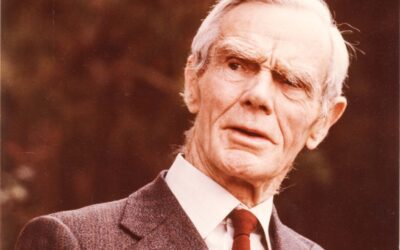




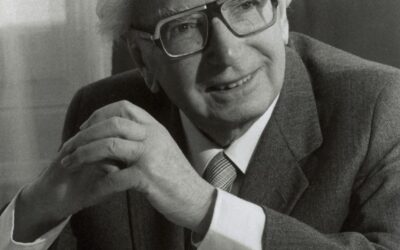
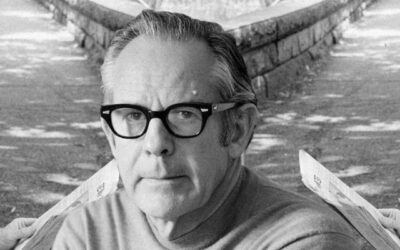
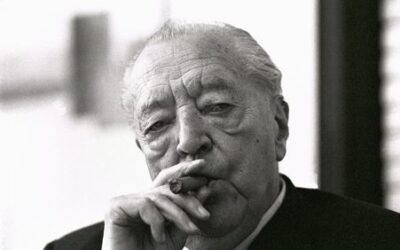
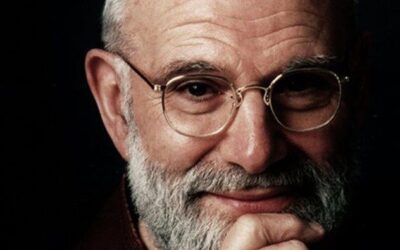




0 Comments